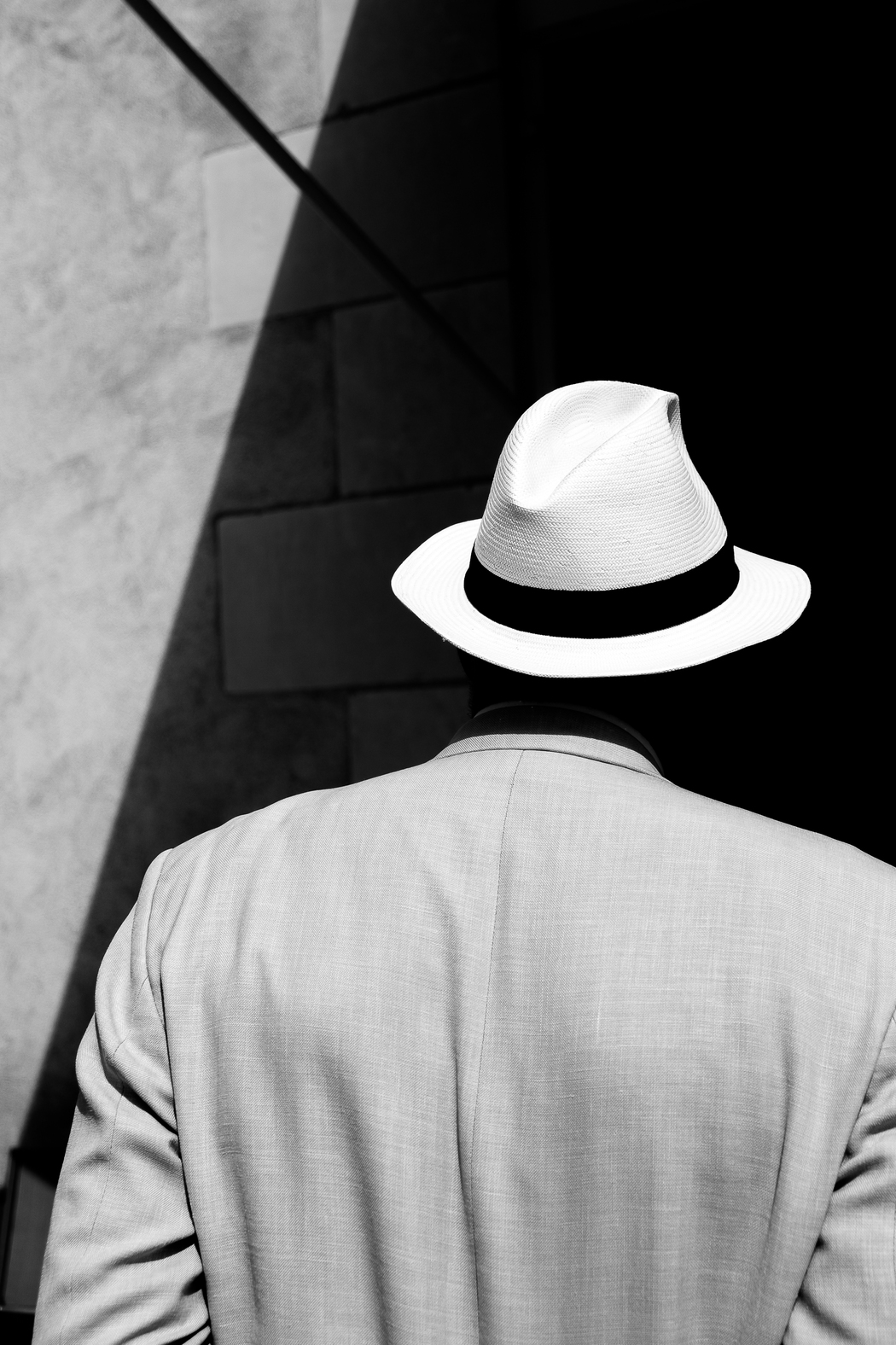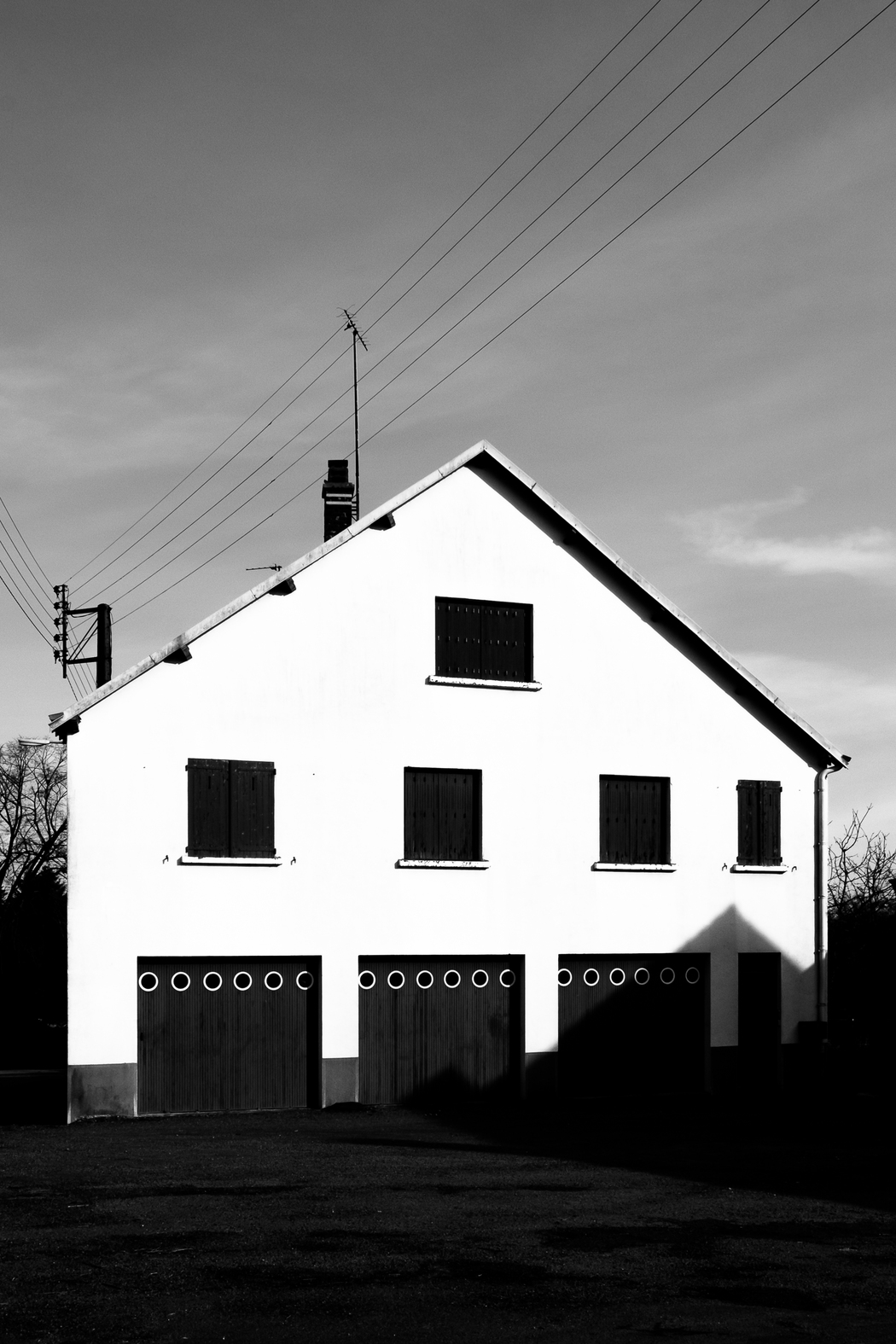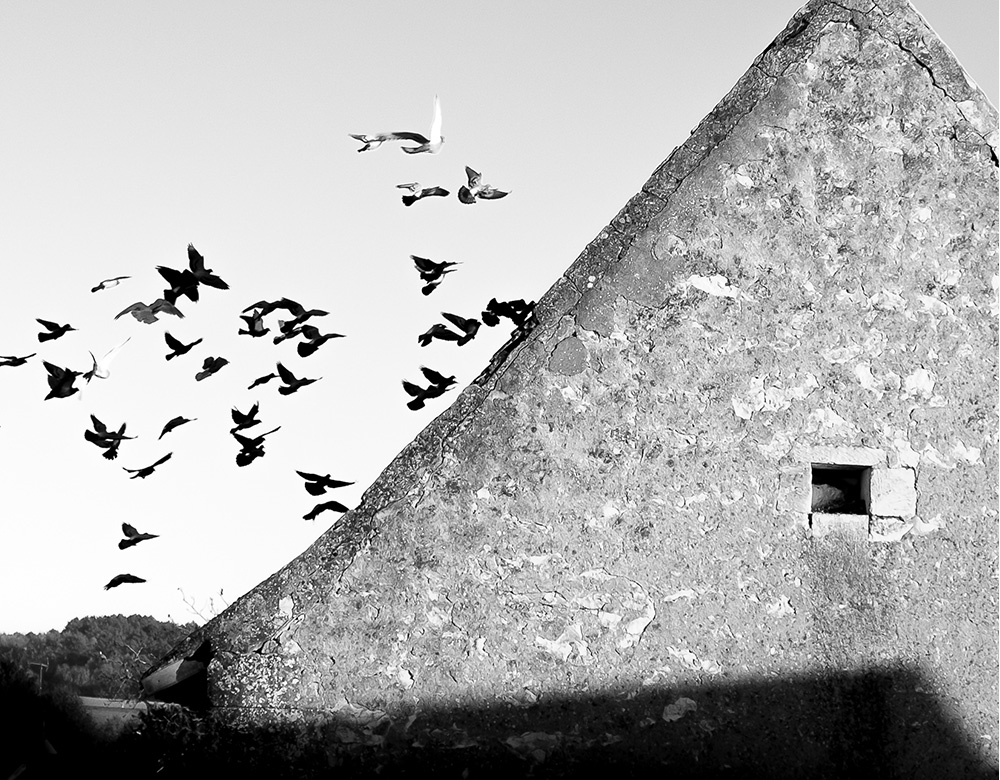Year of birth: 1961.
Where do you live: Near Poitiers, France.
Describe your art in three words: Graphic, poetic, introspective.
Your discipline: Photography.
Website | Instagram
You describe the Post Meridiem series as a meditation on light, time, and space. Could you elaborate on how you decide when to capture the perfect moment, especially with the shadows playing such an important role?
Yes, Post Meridiem is very much a meditation—on light as it evolves through the afternoon, on time as it seems to slow down, and on space as it gets reshaped by shadows. I’m particularly drawn to the moments when the sun has passed its zenith and begins to cast longer, denser shadows. This specific light creates a geometry I find deeply evocative—it sculpts the world into abstract forms, turning the ordinary into something poetic.
Deciding when to capture the “perfect” moment isn’t so much about precision as it is about presence. I spend a lot of time simply observing how the light moves across a scene. I wait for that fleeting instant when shadows and forms align in a way that feels both harmonious and slightly mysterious—when the image becomes more than just a depiction of a place, but a suggestion of time passing, or even of time standing still. That’s when I press the shutter. Shadows, for me, are not just visual elements—they’re emotional, they carry silence, memory, and a sense of transience.

In your artist statement, you mention stripping away the seductive immediacy of color. How does working in black and white help you express the essence of a scene?
Working in black and white allows me to distill an image down to its essential elements—light, form, texture, and rhythm. Color can be very seductive; it often grabs our attention first, but it can also distract from the underlying structure of a scene. By removing it, I invite the viewer to look more deeply, to engage with the composition and the emotional resonance of the image on a more introspective level. In Post Meridiem, this absence of color intensifies the presence of shadows and contrast, which are central to the series. Black and white amplifies the tension between light and dark—it becomes almost sculptural. It’s not just about documenting reality; it’s about transforming it into something more timeless, more contemplative. The scene becomes less about the specifics of place or time, and more about a sensation, a mood, an echo. That’s what I’m after—the quiet, powerful essence of a moment.
How do you approach the challenge of turning ordinary, everyday scenes into something abstract and surreal? What draws you to these seemingly mundane moments?
I’m deeply fascinated by the poetry of the everyday—the subtle moments that often go unnoticed. My approach is not to impose abstraction, but to reveal it. When I walk through a space, I look for how light transforms it, how shadows carve unexpected shapes, how angles and reflections can create a sense of disorientation or mystery. The surreal often emerges naturally when you learn to see beyond the function of things.
What draws me to the mundane is precisely its potential to become something else. A wall, a staircase, a tree—these are not inherently dramatic subjects, but under the right light, they can become almost metaphysical. In Post Meridiem, the afternoon light acts as a kind of alchemist, turning the banal into the uncanny. There’s a quiet tension in those moments, as if the world is pausing, holding its breath. That’s what I try to capture—those fragile thresholds between reality and imagination.

Can you talk about the process of waiting for the “right light” and how it feels to be in that moment of anticipation before the image is captured?
Waiting for the right light is both a discipline and a form of meditation. It requires patience, attentiveness, and a willingness to surrender to the rhythm of the day. In the context of Post Meridiem, I often find myself returning to the same places, knowing that the light at a certain hour will reveal something different—something invisible just moments before. That moment of anticipation, just before I take the photograph, is almost sacred. It’s a kind of stillness where everything aligns—light, space, emotion, and intuition. I’m not chasing the image; I’m allowing it to come to me. There’s a delicate tension in that pause, a quiet excitement. I might wait for a shadow to lengthen just a bit more, for the sun to dip slightly lower, or for a passing cloud to shift the mood. And then, suddenly, the moment is there—brief, precise, and if I’m lucky, full of meaning. Capturing it feels less like taking and more like receiving.
Your work is minimalistic and abstract in nature. What does it mean to you to evoke emotion through such simplicity?
For me, simplicity is a powerful way to reach emotion—perhaps because it leaves space for the viewer to enter the image with their own thoughts, memories, and sensations. When I strip an image down to its essential elements, I’m not removing meaning—I’m distilling it. The minimalism in my work is not about absence, but presence. It’s about creating silence within the frame so that something deeper can be felt.
Abstraction, too, plays a role in this. It opens the image to interpretation. When the subject is no longer entirely defined, it becomes more universal, more intimate. A shadow, a line, a wall—these can carry as much emotion as a portrait if they are charged with the right light, the right tension. What matters is not what we see, but what we sense beneath the surface.
Ultimately, I want my photographs to resonate like a whisper—subtle, but lasting. I believe that in simplicity, there is room for depth, mystery, and quiet beauty.

How does the theme of time, particularly the afternoon light, influence the mood or emotion of your photographs?
Time is at the heart of Post Meridiem. The afternoon light—when the sun begins its descent—has a particular quality that deeply affects the mood of my photographs. It’s a transitional light, filled with a sense of quiet melancholy, introspection, and even nostalgia. Shadows grow longer, contrasts sharpen, and the world seems to slow down. That subtle shift creates an emotional atmosphere that I try to capture—a kind of suspended moment between presence and disappearance.
This light speaks of endings, but not in a dramatic way. It’s more like a gentle fading, a soft withdrawal that invites reflection. For me, photographing in the afternoon is a way to visually express the passage of time—not through clocks or movement, but through the way light touches surfaces, defines space, and slowly retreats. It’s an ephemeral beauty, and that fleeting quality gives the images a certain emotional weight. You feel the moment is already slipping away, and in that, there is both poetry and truth.

Post Meridiem reflects a sense of stillness and quiet. How do you balance capturing that silence in a world that is often noisy and fast-paced?
In a world that moves quickly and constantly demands our attention, seeking stillness becomes almost an act of resistance. With Post Meridiem, I try to carve out a space where time slows down, where silence becomes visible. That begins with my own state of mind—moving slowly, observing without rushing, being fully present in the environment. I don’t go out looking for dramatic scenes. Instead, I wait for the quiet moments that reveal themselves when we take the time to truly see. Photography, for me, is not about chasing the spectacle—it’s about listening. Light, shadows, and emptiness can speak just as powerfully as noise and action, if we allow them to. The stillness in my images is a reflection of that listening. I try to balance the external world’s pace by creating photographs that invite pause, contemplation, even a kind of inner silence.
It’s my way of offering a visual refuge—an image where the viewer can breathe.


0 comments on “Dominique Philippe Bonnet”